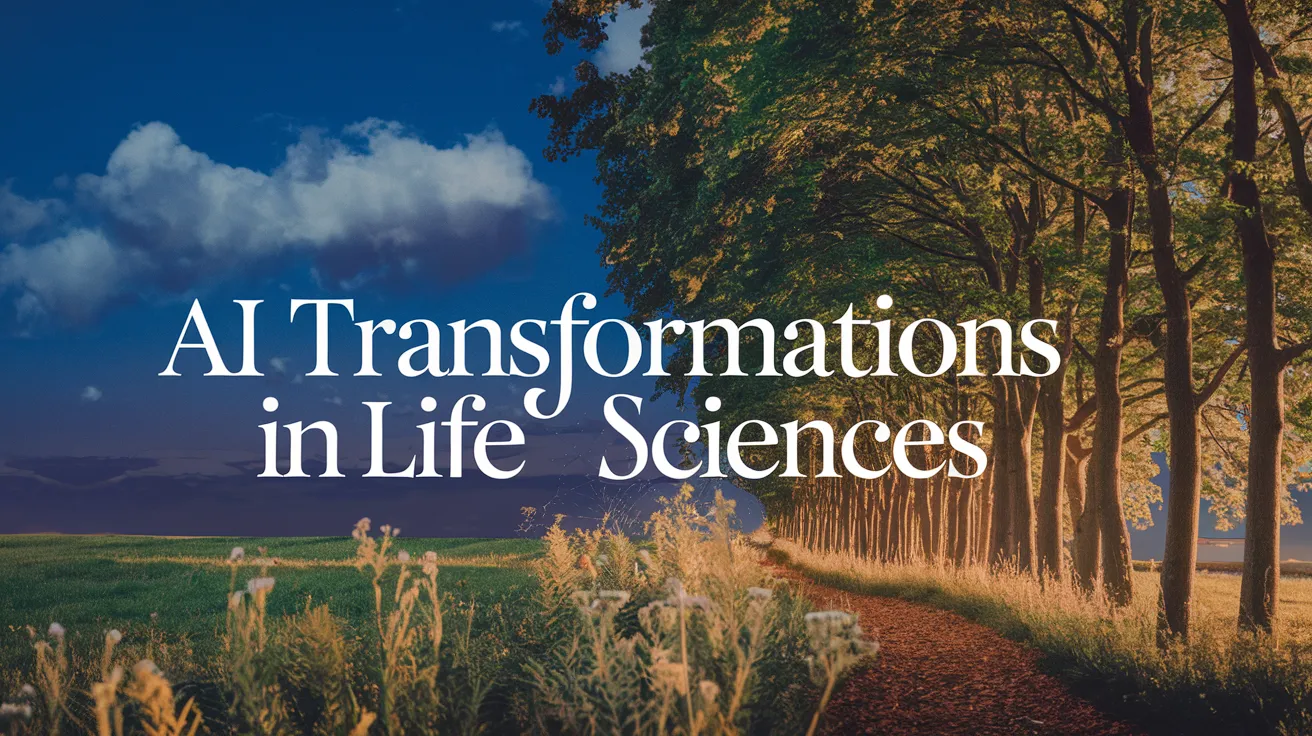AI Transformations in Life Sciences

We have long believed that AI will fundamentally reshape biotech and healthcare, positioning us at the brink of an AI-driven Industrial Revolution. But when will we see this payoff? When will the majority of new drugs be designed with AI? Currently, the first wave of therapeutic candidates designed and optimized by AI/ML tools are making their way through clinical trials, with new NDA/BLA applications referencing AI accelerating rapidly. However, it’s essential to recognize that merely counting the number of approved AI-enabled medicines is a lagging indicator of success, overlooking the multitude of treatments still in development.
To contextualize this point, consider the evolution within the natural language processing (NLP) field. Initially, models like GPT-2 marked significant steps forward but had notable limitations in areas like fact-checking and contextual understanding. In contrast, advancements seen in GPT-4 and other large language models (LLMs) have catalyzed a generative AI renaissance expected to generate trillions in economic impact. Similarly, in biotech and health, we are still in early phases of a significant shift in life sciences R&D driven by AI.
This article presents our analysis of the “Jobs to be Done” (JTBD) for AI in life sciences, detailing the areas where we believe AI will make the most significant impact. The challenges posed by vast amounts of complex, multimodal data combined with labor-intensive, expensive tasks create an optimal opportunity for AI to reshape the field.
AI Jobs to be Done in Life Sciences
In life sciences, hypothesis generation and prioritization is at the core of scientific discovery. This process traditionally requires extensive labor to sift through broad research literature. Here, AI can emerge as a game-changer. By automating literature reviews, analyzing experimental data, and generating hypotheses, the AI Scientist could achieve capabilities beyond human reach. State-of-the-art LLMs can assimilate knowledge from the entirety of scientific work to date, enabling researchers to consult AI for feedback and help in preparing research proposals.
As AI continues to enhance experimental design and data analysis, it unveils insights from complex datasets that can inform new hypotheses leading to major discoveries. Additionally, the advent of digital twin technology—from cellular to systemic levels—allows for in-silico testing and a comprehensive understanding of disease mechanisms.
AI for Target Area Selection and Pipeline Prioritization
Determining which therapeutic areas and targets to focus on is fundamental for therapeutic platform companies. This process requires synthesizing large quantities of historical data and predicting competitive landscapes to strategically inform company pipelines. AI technologies excel in processing these data-rich environments, enabling better decision-making without the same risk associated with human error.
AI in Preclinical Development
AI is poised to disrupt virtually every aspect of preclinical drug development, including target discovery, design, and formulation. Significant reductions in timelines and expenses are already evident in the design of effective small molecules, proteins, and cell and gene therapies. The organic nature of biologics discovery will give way to sophisticated models integrating AI technologies to enable precise protein design and efficient manufacturing through generative chemistry approaches. Furthermore, the development of algorithms to predict interactions during the formulation process is shifting this final stage of drug development from trial-and-error to systematic methodologies.
AI also aims to address the challenge of successfully navigating the “valley of death” for drugs, where valuable biomedical research often fails to progress to clinical trials. Virtual animal models developed through AI can identify promising compounds that enhance translational pharmacokinetics and highlight potential toxicities, thereby reducing the need for unethical real-world animal testing.
Integrating AI in Clinical Development
Clinical development represents a high-cost phase in drug development, consuming over half of total investments. Integrating AI across clinical development processes presents clear opportunities for reducing costs and timelines while enhancing patient care. For instance, AI-assisted clinical trial design could empower small biotech firms and increase the efficacy of patient selection for trials, ultimately improving overall success rates.
Moreover, as data collected during clinical studies improves, AI can be employed to discern signals of efficacy and safety in real time. This capability allows researchers to more accurately define treatment correlations, improve drug approval quality, and reduce regulatory burdens through AI-enabled tools that streamline IND application processes.
Beyond Drug R&D
The impact of AI will also extend into the bioeconomy. Biomanufacturing, which relies heavily on enzymatic processes, can utilize AI to optimize production, leading to cost-effective manufacturing practices. Furthermore, AI’s advancements in carbon capture technology and development of brain-computer interfaces may pave the way for significant innovations in health sciences.
Conclusion
AI has emerged as a powerful tool for decoding the complexities of biology, reinforcing our advertisement as proponents for AI’s role in tackling pressing challenges within life sciences. AI’s potential spreads across the full spectrum of Jobs to be Done—from hypothesis generation to clinical trials and beyond. As we observe an evolving impact of AI, we encourage continued engagement with the most exciting areas of exploration in life sciences.